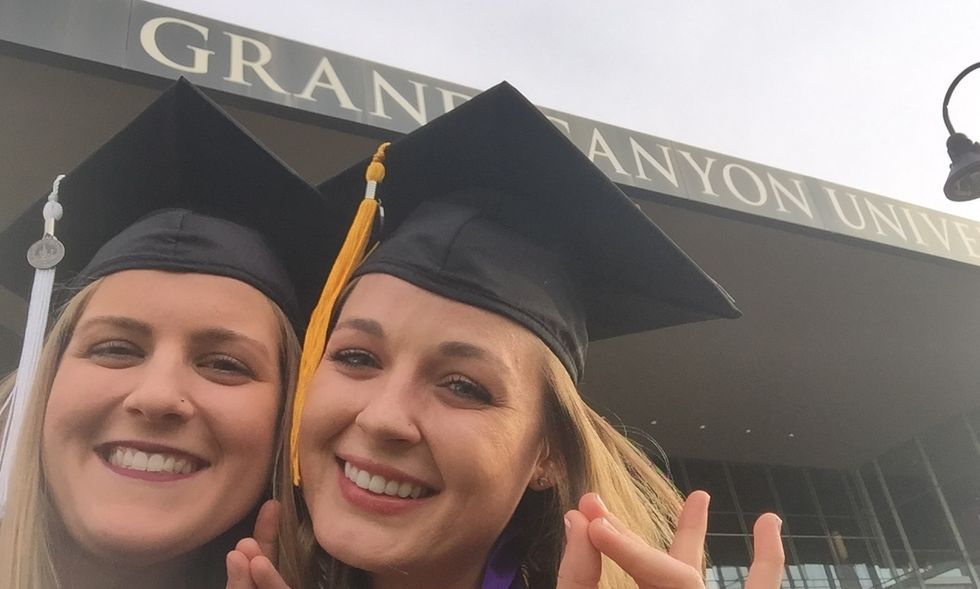Earning a college degree is a grueling process. Semester after semester, students scramble to finish tests and projects while juggling extracurricular activities, jobs, and a social life. All this can be compounded by learning challenges such as ADHD.
Throughout school, I had a hard time focusing. I couldn't sit still or pay attention for long periods of time; I was a habitual procrastinator. I considered this to be a normal part of being a student, but during my last year of college, I was diagnosed with Attention Deficit Hyperactivity Disorder. The news rocked me, but it also explained who I am and how my brain works.
At last, I had an answer about why education felt especially cumbersome and taxing for me. Unfortunately, I received this diagnosis in October of my senior year of college, about 16 years after I started showing symptoms at school. Oops.
Regardless, I graduated with a bachelor's degree in April 2018. In spite of the frustrating nature of my ADHD, I managed to finish my education with a high GPA to boot.
Looking back, I wish I had found the answer sooner about why my brain was so unpredictable. Without knowing, I had picked up a lot of coping mechanisms and lessons on how to manage an unruly mind. I want to share them with the world, so fellow ADHDers can find more manageable ways to cope.
Honed over four years, here is my method for getting a college degree with ADHD:
I always kept a pocket notebook with me. I still do. It's scratch paper for sketches, phone numbers, ideas, lists, and other flyaway thoughts. And for those of you wondering, using the Notes app on my phone is not the same.
Physically writing my notes helps to manage my workflow and nail down the thoughts that bounce around my brain like a pinball in a machine.
During my sophomore year, I quit using my computer to take notes. No matter how quick and convenient typing may be, I never could pry myself away from browsing the internet or working on homework for other classes during lectures.
Instead, I started using a composition book for each semester's notes. Beyond forcing me to pay attention to lectures, writing my notes occupied my fidgety hands and helped me to process the most important information instead of copying down my professor's entire slide. I learned to draw diagrams, symbols, and images in my notes to help improve the note-taking experience and fulfill my need to be creative.
As a communication major, I wrote a LOT of papers. For the first two years, I would leave these until the last minute, forcing myself to marathon-write page after page in the hours before the paper was due. Over time, I learned that night-time is when I am least clear-thinking and productive.
Instead, I developed a workflow in which I would write and do homework during breaks in my day. I treated my education like a full-time job, which left me with relaxing, homework-free weekends. Monday to Friday from 9 AM to 5 PM, I had three options for my time: be at work, be in class, or be doing something productive. This meant that if I had a two-hour break between classes, I'd head to the library or coffee shop to get some work done. Avoiding the temptation to return to my dorm and take a nap was difficult, but not as difficult as producing a five-page research paper at 10 PM the night of the due date.
The Pomodoro Timeris a study tool that transformed my productivity and focus during long study sessions. It's a method of timing your workflow to keep your brain focused and avoid study burnout.
The Pomodoro Timer starts with a 25-minute period of studying, followed by a five-minute break. It's important to not stop working during the 25-minute period. During the break, you can browse Instagram, respond to texts, and walk around a bit. After five minutes, return to work for another 25 minutes. The process is repeated three times, and on the fourth break, take a 15-minute rest period. Rinse and repeat until your homework is a thing of the past.
Using this method I could work for hours without using up my short attention span or burning out from studying too long.
Exercising was key for me to focus better in class and to have the energy to get through the day. I started working out during the second semester of my freshman year after a rough start to my college career. My grades went up two letters, I procrastinated less, and I felt more energetic and focused after breaking a sweat each day. Exercise is an incredible tool to aid mental health, especially for those with ADHD.
A calendar with color-coding helps me to compartmentalize the different parts of life and not miss appointments. During college, I specified different colors for class, social events, my RA commitments, and my on-campus job. I prefer to use Google Calendar, but your phone calendar, or even a physical planner, works great too.
It took me years to discover the best ways to manage my ADHD, and during most of those years, I had no idea that ADHD was the cause of so much of my trouble at school. In spite of the challenges, I am thankful for a mind that operates with ADHD. It's part of what makes me creative and resourceful.

The steps I've listed above helped me to reduce the negatives of ADHD and leverage the positives. If you also struggle with ADHD in college, you're not alone. Seek clinical help if you can, and don't give up. Once you have earned it, your degree will never be revoked.
















